South West France
South West France Travelling the Canal du Midi: this article will help mature and senior travellers understand the cultural and geographical links between the Atlantic Ocean and Mediterranean Sea through Southwestern France as they prepare…
25 Nov 18 · 11 mins read
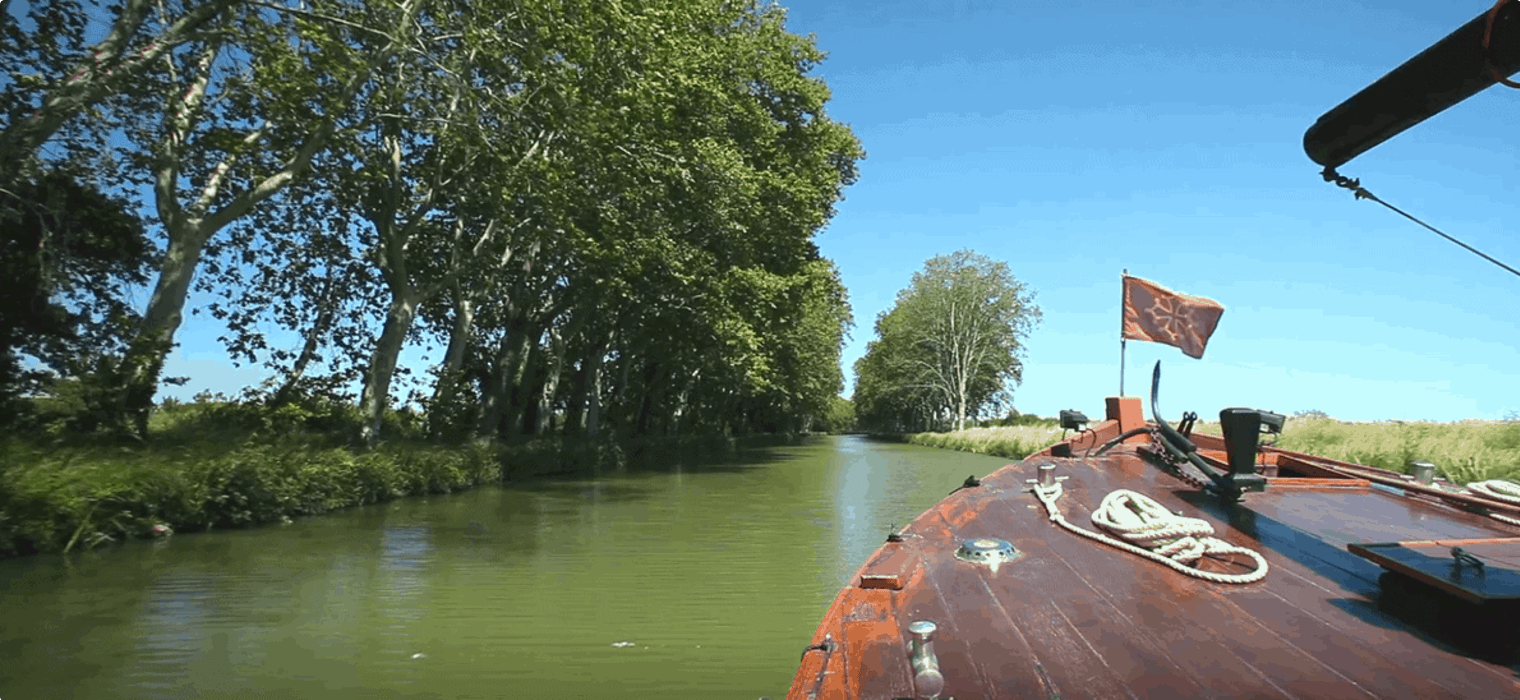
South West France
Travelling the Canal du Midi: this article will help mature and senior travellers understand the cultural and geographical links between the Atlantic Ocean and Mediterranean Sea through Southwestern France as they prepare for a memorable travel experience.
The picturesque Southwestern area is one of the most beautiful regions of France and is a welcoming destination for food and history buffs alike. Atop the rolling hills and along the lush valleys, you can find some great wines and some of the freshest products in the world, a base for rich and hearty French cuisine. This fertile soil has also attracted residents to the area for millennia to cultivate the land and develop commerce. When travelling through the beautiful south of France it is easy to stroll through time as you view medieval buildings on one block and turn the corner into the era of Reformation for 16th century churches. No where is this better seen than on a trip along the Canal du Midi, its gentle current winding its way from Bordeaux to Sète.
For centuries, trade via France from the Atlantic to the Mediterranean has been of the utmost importance for the country’s cultural and economic development. From as far back as the 3rd century BC when Cornish tin was brought in from the United Kingdom (Gray-Durant 2006), exports travelled from the Atlantic via Bordeaux in the Bay of Biscay along the Garonne River to Toulouse and then was transported on land to the Mediterranean and vice versa. Trade continued to increase at a staggering pace throughout the middle ages under King Henry II and into the 1600s.
In order to increase transport capabilities as well as to safeguard cargo ships from the pirates who were rampant around the Gibraltar Strait, Louis XIV commissioned Pierre-Paul Riquet to create a canal through the southwest of France, which set the country on a course toward the Industrial Revolution through quicker, more reliable trade. Riquet designed the 240km Canal Royal du Languedoc, which was renamed the Canal du Midi during the French Revolution, and oversaw its construction from 1667 until his death. The scenic Canal was a feat of technical skill and artistic design as the region’s uneven terrain and inadequate natural water sources, especially in hot summer months, proved challenging. But thanks to Riquet’s ingenuity in overcoming these obstacles, by harnessing the water from the Montagne Noire mountain range, pooling it in the Saint-Ferréol Bassin and creating approximately 60 lock systems, the canal was completed in 1681 and was commemorated as a UNESCO world heritage site in 1996. It now represents one of the oldest operating canals in Europe linking different cultures together as well as linking today’s trade to the past.
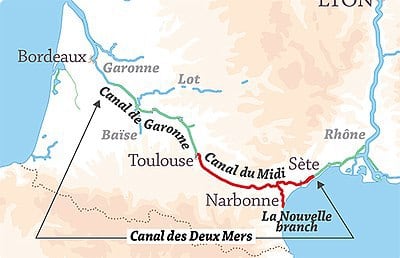
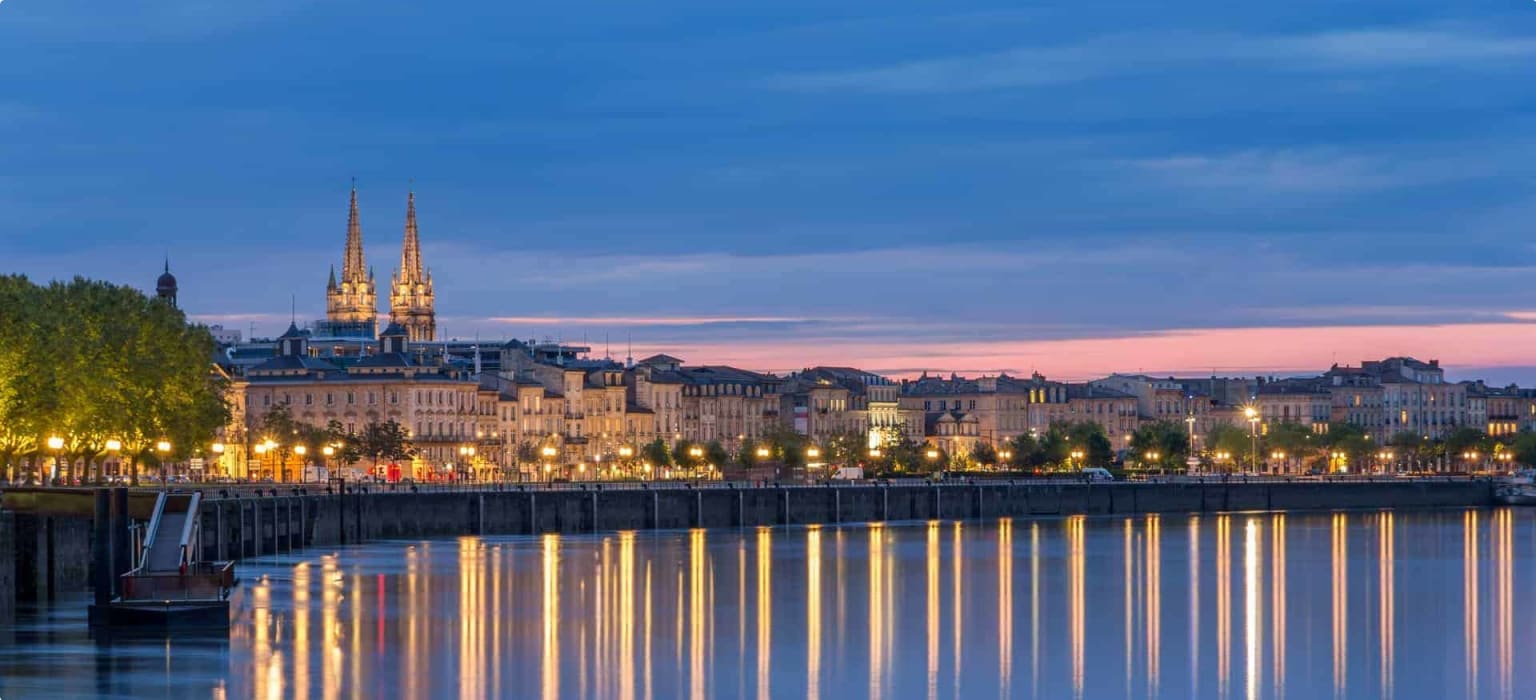
Bordeaux: the “Port of the Moon”
Dating to the age of Enlightenment, the port town of Bordeaux has been regarded as one of the most important hubs of cultural exchange in France. At the mouth of the Bay of Biscay, it is a long-standing centre of commerce dating back two thousand years, the evidence of which can be seen in its architecture and urban planning of which several time periods are represented. For example, the city scape is scattered with structures such as the Roman Palais Gallien amphitheatre (200s); Saint Andrew of Bordeaux Cathedral (1096); Port Cailhau (1494); the Palace de la Bourse (1730); and the Cité du Vin Museum (2016). The vast variety of cultural importance to the area throughout history earned Bordeaux the title of UNESCO world heritage site in 2007.
Bordeaux is probably most famously known for its red wines. The region is temperate, highly fertile, and yields some of the most highly coveted wine in the world. Grape vines were first cultivated circa 71 A.D. for domestic consumption. It was not until the Middle Ages, under King Henry II’s rule, that the wine began to be exported internationally, beginning with England in the 1300s. Popularity increased dramatically from that point thanks in part to tax exemptions provided by the King of France and the expansion of interest in Germany and the rest of Europe. After seeing the success of the Bordeaux wine industry, neighbouring regions began their own vineyards and the reputation of French wine grew from there. A number of the best wine châteaux in Bordeaux are situated along the western banks of the Bay of Biscay. An hour drive along the D2 toward Saint-Estèphe will take you past dozens of world-class wineries.
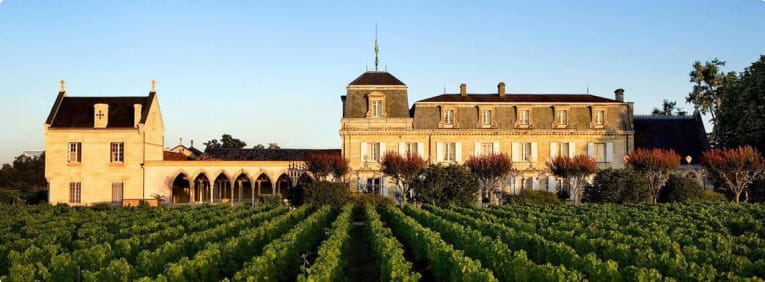
Moreover, the Museum of Wine in Art at the Château Mouton-Rothschild demonstrate the significance of wine in all corners of the world throughout the ages.
On Board from Bordeaux to Toulouse
Amazing landscapes of the French countryside can be taken in from the comfort of a boat cruising the southwest waterways or from a leisurely cycle along the Canal des Deux Mers à Vélo bikeway. Market cities and quaint villages line the banks of the Garonne river as it flows from Toulouse. The area is particularly fertile, making for exceptionally tasty garden vegetables, immense yields of grains, and large variety of vineyards.
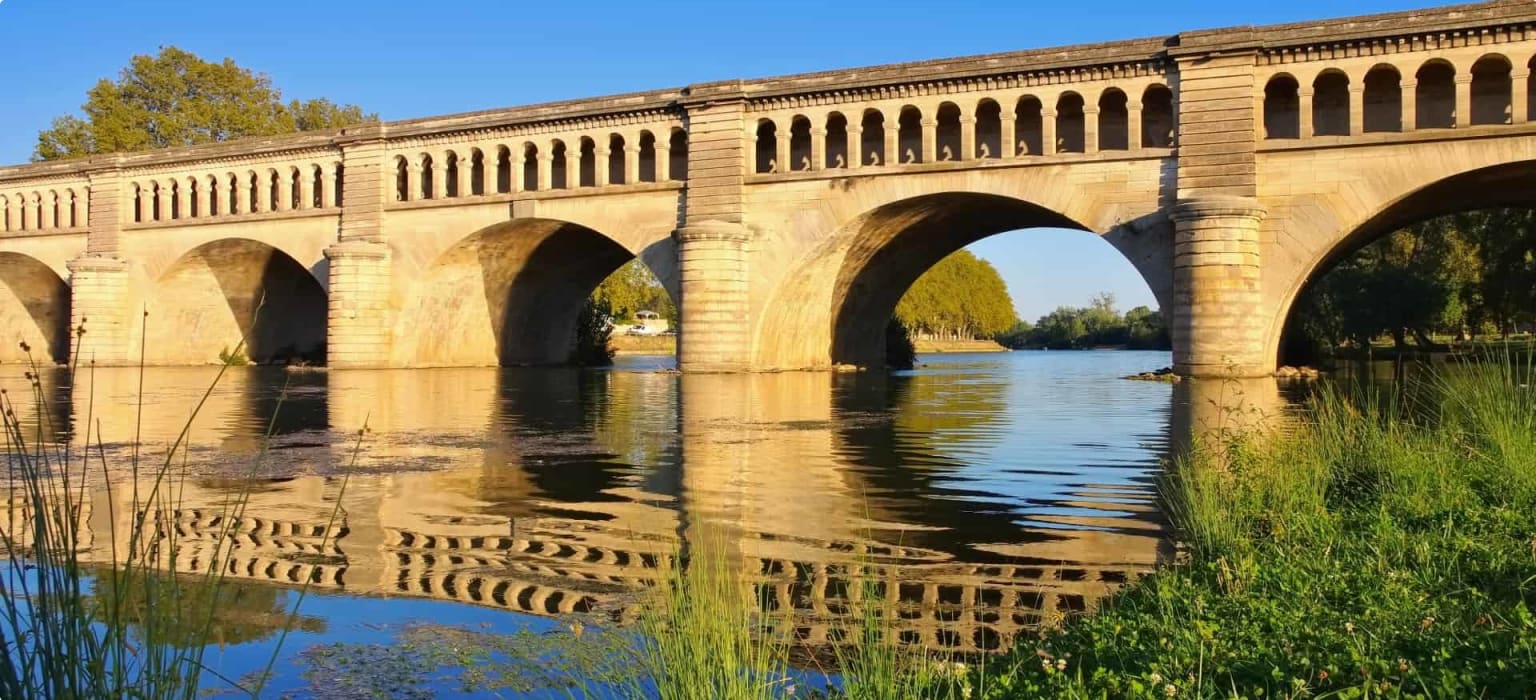
Marmande
The town of Marmande was first established when Richard the Lionheart began construction of a castle in 1182 to act as a watch tower, overseeing the movement of supplies and people on the Garonne River. However, once the fertile lands were discovered and cultivated, the town became an important part of trade in the area, especially for its fresh produce.
Nowadays, the city has been nicknamed the “tomato capital” because it is best known for its sizable cultivation of seedless heirloom tomatoes, a title it celebrates each year in July at its Tomato Fiesta. The town’s long-standing tomato history, dating back to about 1897, is symbolised by the Pomme d’Amour statue in the centre of town.
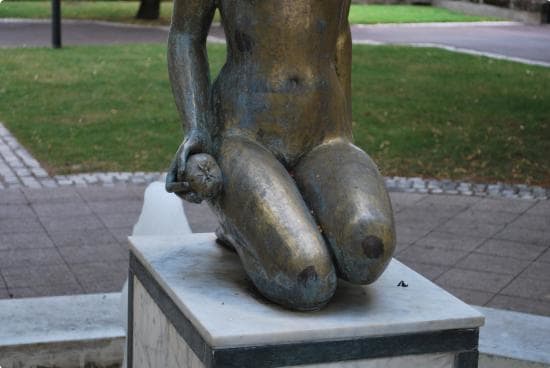
Agen
The town of Agen historically drew in villagers from neighbouring areas bringing their wares to market to exchange for produce brought in by other villagers and by ships with products for exchange from Bordeaux, Toulouse, and beyond. The area was popularised by its prune production in the 15th and 16th centuries from plums that were imported from 11th century Damascus. Traditional brandy-soaked prunes can still be found at the Place des Laitiers market. Agen also had a booming textiles industry in the 17th century.

Moissac
40km east of Agen marks the parting of the Garonne river into the Tarn River and the Canal de Garonne that links up to the Canal du Midi. Situated in the fertile Garonne valley, the small town is the region’s leader for fruit production, totaling nearly 200,000 tonnes of each year (Gray-Durant 2006). Among this yield are a grape varietal called Chasselas, one of the only regions outside of Switzerland that produces it. Not only does this make Moissac an important point along southwest France’s river trade routes, but it is also a point along the popular Le Puy route of the pilgrimage of Santiago de Compostela.
Hordes of pilgrims and tourists have stopped in to Moissac whilst walking the more than 500 km route to the tomb site of an Iberian Apostle St. James discovered in 814. Though much of the town was washed away by an overflow of the Tarn River in 1930, the highlight of Moissac is St. Peter Abbey and cloisters, which withstood the flooding. The Abbey originated in the 7th century and the cloisters in the 9th century. The Roman style of these structures, namely the Abbey’s tympanum above the southern entrance way, contrasts with the city’s vibrant art deco scene that replaced the buildings washed away by the flood.

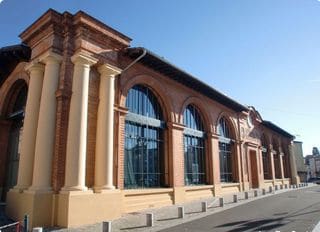
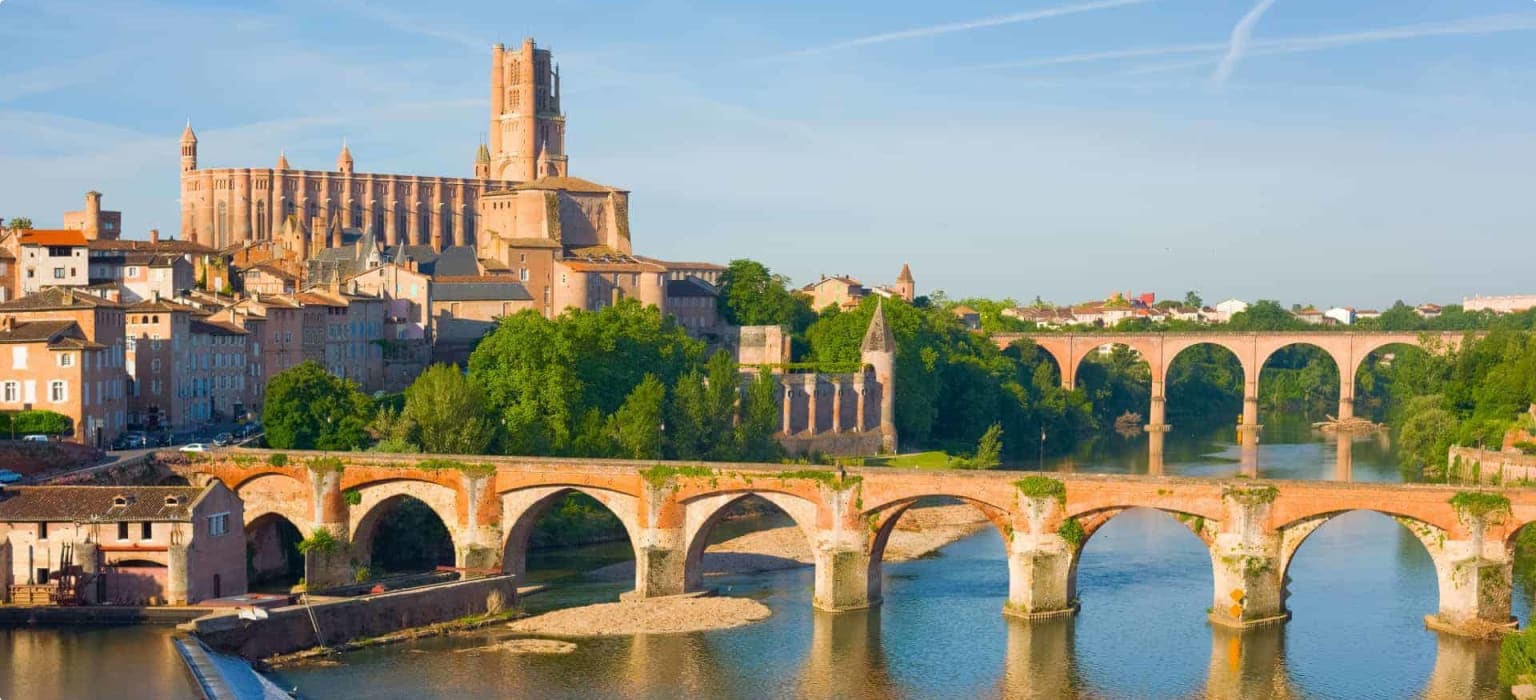
Detour to Albi
Albi is a recently established world heritage site (2010) approximately 75km northeast of Toulouse. Though it is not located on the Canal du Midi, it is connected to Bordeaux via the Tarn river and has historical ties to the textile industry.
The city itself dates back to the 10th century and is a marvel of medieval architecture. Throughout the medieval period, Albi was one of the top producers of woad, a flower used to make blue dye for use in textiles and tapestries. One prominent example of its use is in series of tapestries called The Hunt of the Unicorn, dated approximately 1500, now on display at the MET in New York City.

The Albi Cathedral was built and rebuilt in 500s, 920s, and again in the 1400s. But, once completed, it put its fortunes from the woad trade on full display by painting blue frescoes on its ceiling in 16th century.
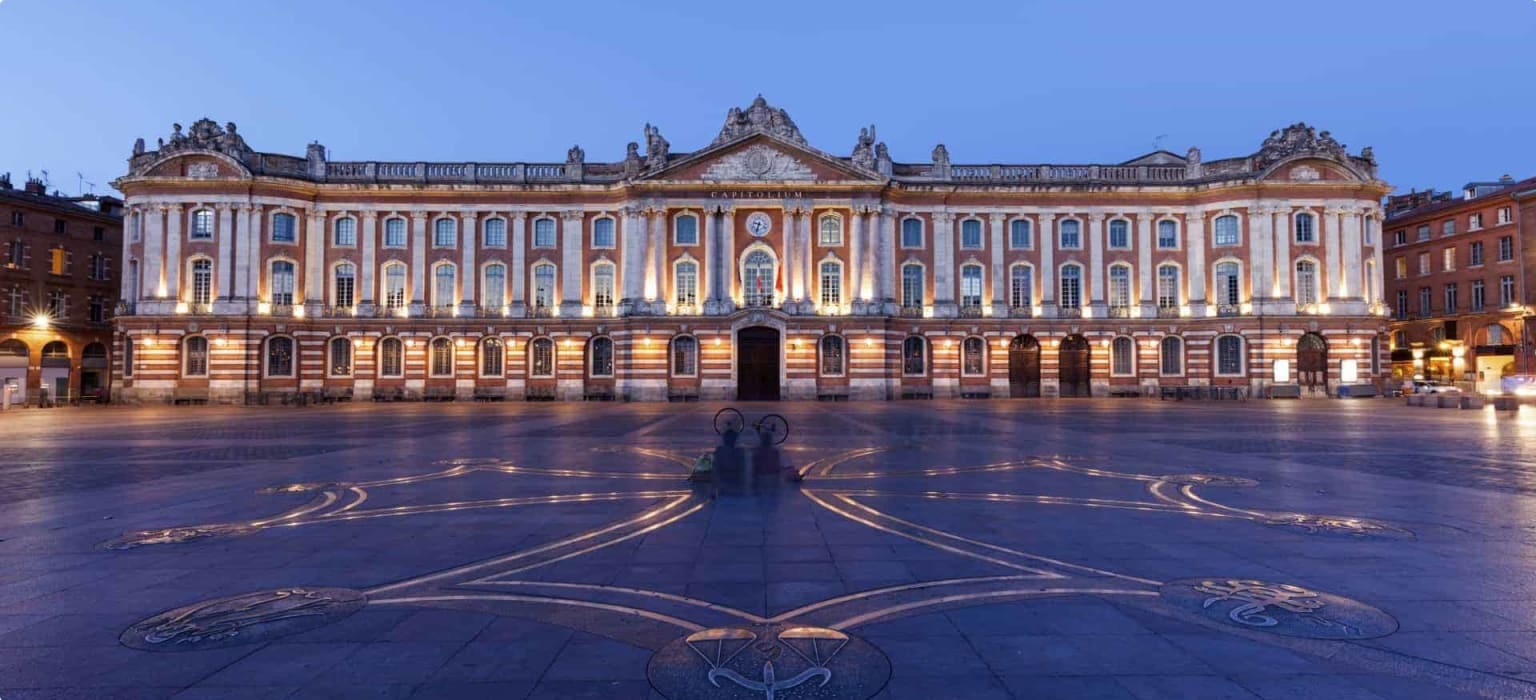
Toulouse: “The Pink City”
Characterized by the rose hue of the brick used to build most of the buildings in the city, the vibrant city of Toulouse stands as a midway point where the Garonne river and the Canal du Midi met to form a link between the Atlantic and Mediterranean oceans. Even before the Canal du Midi was constructed, it was regarded as a transfer point for trade as far back as for the Celtics in the 3rd century B.C. (Gray-Durant 2006). Indigo was made from the woad in Albi and surrounding areas, leading to Toulouse’s participation in the printing trade with Lyons starting in 1476. The successful commerce in indigo gave rise to elite group of merchants’ whose lavish homes can still be found throughout the city, especially in the Old Quarter. One such mansion is the Hôtel d’Assézat, pictured here:
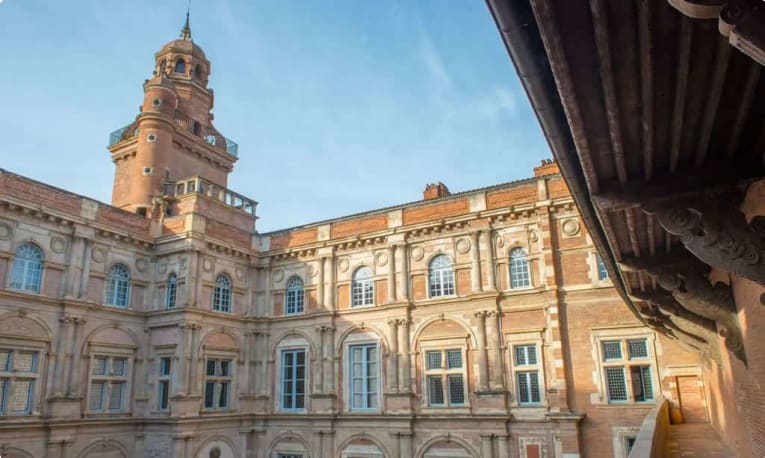
The old quarter remains a testament to the vast wealth that the trade hub throughout the centuries brought to the city. Because of this wealth and centrality in the area, it was established as the capital of the province and an administrative centre for the area. This is highlighted by the construction of The Place du Capitole in the 1750s.
Rich can also be used to describe the food in Toulouse. Known for serving quintessentially French cuisine, it is here that you can find such selections as cassoulet, confit de canard, and saucisse de Toulouse among others. You can also sample the delicate candied violets that have been a tradition in the area since 1850s.
Toward the Mediterranean coast
Carcassonne
If you were to drift down Canal du Midi 80km east of Toulouse, you would pass through Carcassonne. The Medieval fortress had an immensely strategic position throughout the more than 2,000 years since its settlement as it was poised upon the border to defend France from the kings of Aragon. But, the fortified town of Carcassonne lost its importance when the 1659 Treaty of the Pyrenees pushed the French border south to where it now lies. Even still, its exemplary medieval construction has stood the test of time and became a UNESCO world heritage cultural site in 1997. The 3km-long wall encloses the city’s Basilica, castle, residential buildings, and streets.
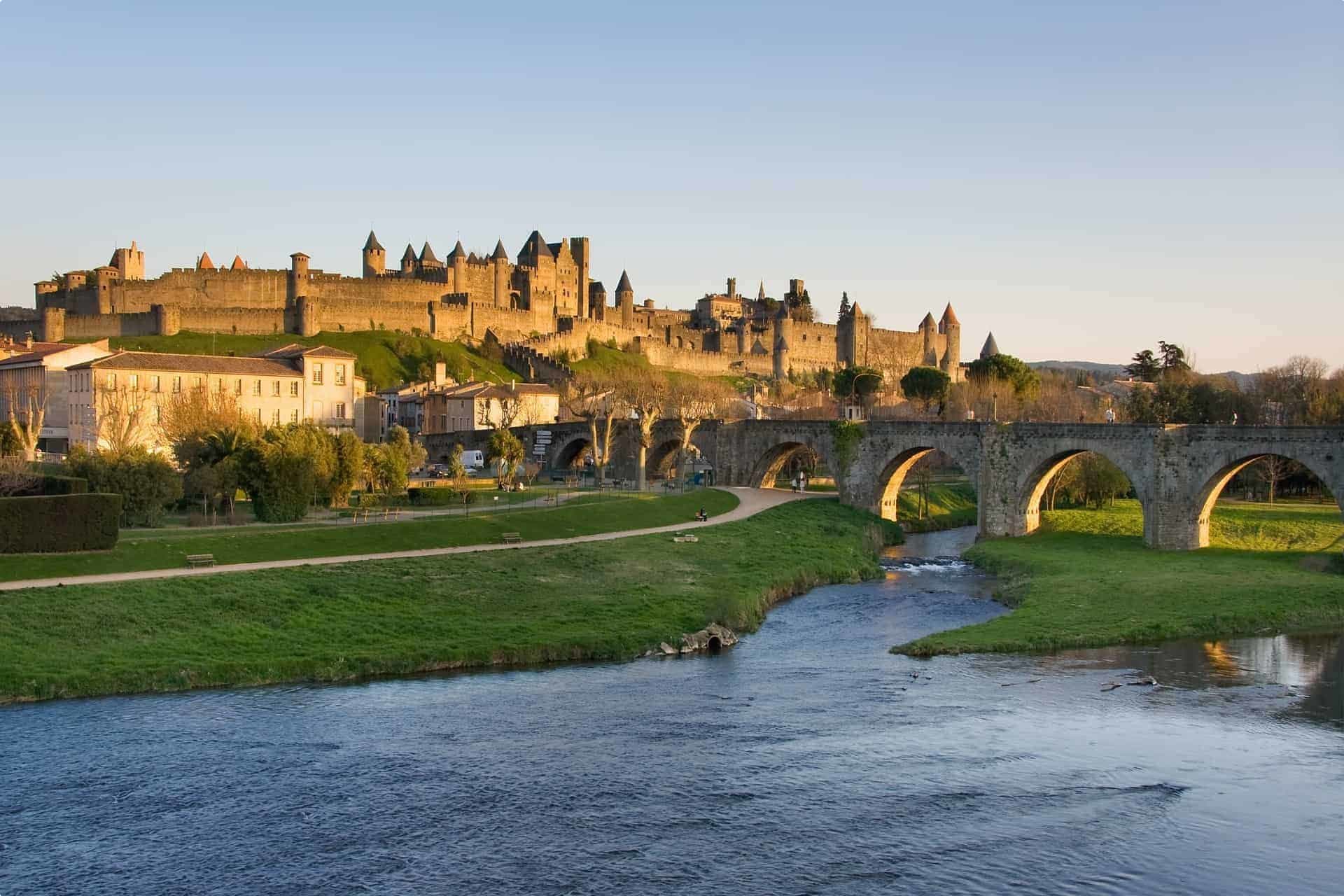
Narbonne
Moving a further 60 km east of Carcassonne would lead you to the historic town of Narbonne. The Romans first colonised the area in 118 B.C. One of only a handful of bridges adorned with occupied residences, Merchant’s Bridge that crosses the canal mimics a Roman-built bridge for its trade routes along the Via Domitia, which is exhibited in the historical landmark of the same name discovered in 1997 across from the Palais des archevêques.

Narbonne became an important Mediterranean port that changed hands many times throughout its history until unification with France in 16th century. The port frenzy slowed in the 14th century as the Aude river altered its path. But, to maintain its economically important trade of Aude wines, the town opted to build the Canal de la Robine for a more reliable means of connecting to the Mediterranean and the Canal du Midi.
Béziers
The town of Béziers pre-dates the vast majority of towns in the south of France, as it has been populated since the Neolithic period. It is at the crux of two important trade routes: the Via Domitia, linking Rome to Cadiz; and the Canal du Midi, linking Bordeaux to Sète. The influence of Spanish culture is evident throughout the city, in its architecture, especially the Béziers Arena; in its popular activities, such as bullfighting; and even in its food, as Spanish-style tapas remain deeply embedded in the lifestyle.
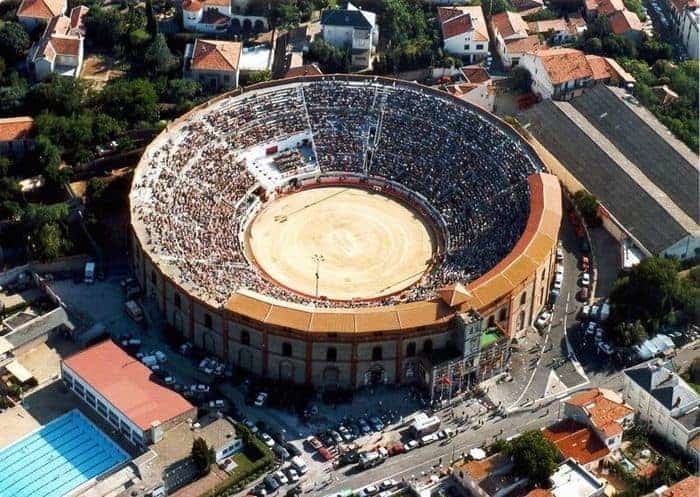
Béziers is home to two of the most important engineering tasks of the Canal du Midi, the Malpas Tunnel and the Fonserrannes locks. Controversially, Riquet ordered his mason to dig the Malpas Tunnel in secret as government stopped works due to the fragile sandstone the hill was made of and the risk of collapse. But, they managed to complete the dig and reinforce the ceiling with concrete before the government had the opportunity to alter the route or end the project all together. The 165m tunnel just west of the Béziers became Europe’s first navigable canal tunnel in 1679.

The Fonserrannes locks, otherwise known as the ‘Seven Lock Water Stairway’, is a set of seven distinctively oval-shaped locks. The largest set of locks on the Canal du Midi, they raise and lower boats approximately approximately 21.5m.

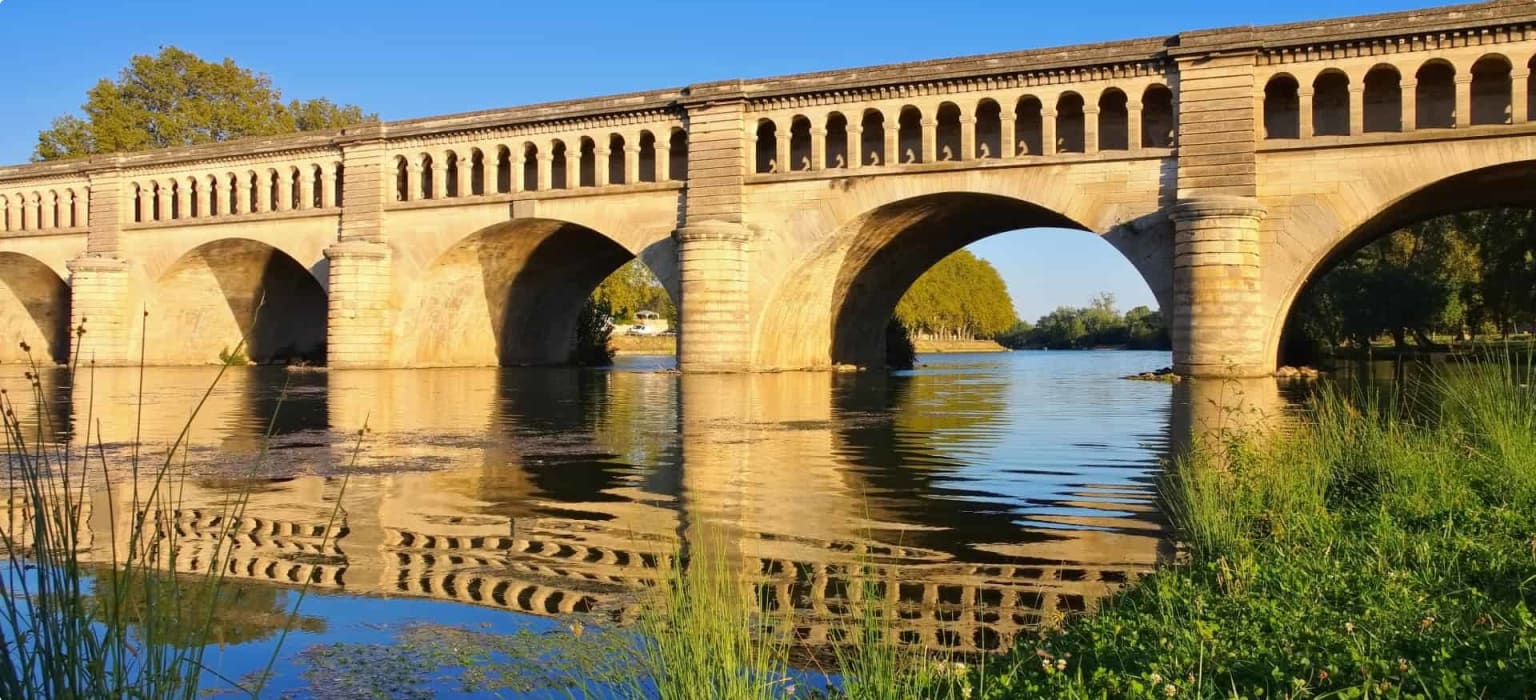
Meeting the Mediterranean
Sète was an important port site for centuries, as far back as the Bronze age. It was an important transfer point for commercial traders from Italy and Greece with surrounding civilizations. However, leading up to the industrial revolution, a strong economic and military port for France on the banks of the Mediterranean was crucial. King Louis XIV called for the creation of a new jetty just prior to his approval for the Canal du Midi.
Life in Sète is heavily based upon its waterfront location. Fishing has historically been a key commodity for the city to trade and remains central for its current economy. As a result seafood remains a staple part to locals’ diets. The cuisine in the area has been heavily influenced by Italian recipes, such as the pasta dish macaronade. In the 18th century, the tradition of water jousting was born, and continues to be held.
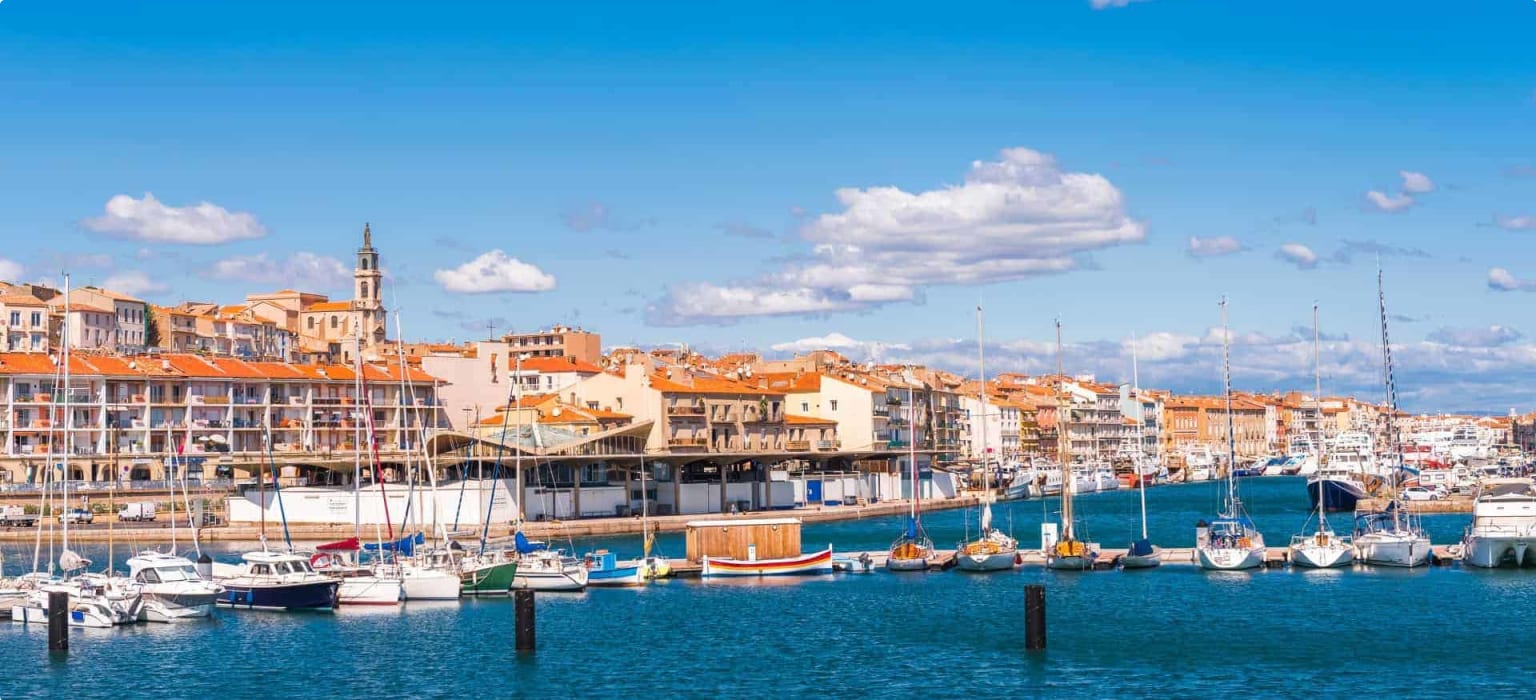
The memorable journey along the Canal du Midi is best appreciated at a leisurely to soak up the beautiful scenery of the French countryside, enjoy traditional foods and admire the historic cities that line its banks. The significance of the Canal du Midi cannot be understated as Pierre-Paul Riquet managed to persevere through the challenges of the landscape to complete one of the most important trade routes in the area. The UNESCO-listed site is a must-see for anyone looking to understand the vibrancy of production and trade in southern France over several hundred centuries.
References
Gray-Durant, D. “Blue Guide: Southwest France” Somerset Books Company. New York. 2006
About Odyssey Traveller

We specialise in educational small group tours for seniors, typically groups between six to 12 people from Australia, New Zealand, USA, Canada and Britain. Our maximum number of people on a tour is 18 mature aged travellers. Typically, our clients begin travelling with us from their mid 50’s onward. But be prepared to meet fellow travellers in their 80s and beyond! Both couples and solo travellers are very welcome on our tours. We have some 150 tours and offer 300 scheduled departures on offer each year. Odyssey has been offering this style of adventure and educational programs since 1983.
Odyssey Traveller is committed to charitable activities that support the environment and cultural development of Australian and New Zealand communities.
Odyssey Traveller scholarship for Australia & New Zealand University students.
We are also pleased to announce that since 2012, Odyssey has been awarding $10,000 Equity & Merit Cash Scholarships each year. We award scholarships on the basis of academic performance and demonstrated financial need. We award at least one scholarship per year. We’re supported through our educational travel programs, and your participation helps Odyssey achieve its goals. Students can apply for the scholarship by clicking on this link to find out more details.
Join our loyalty program when you join an international small group tour.
Every International small group tour taken typically contributes to your membership level in our Loyalty Program for regular travellers. Membership of the alumni starts when you choose to take your first international small group tour with Odyssey Traveller, discounts in tour pricing for direct bookings accrue from your third tour with Odyssey Traveller. To see the discounts and benefits of being a Bronze, Silver, Gold, and Diamond alumni member with us, please see this page.
For more information on Odyssey Traveller and our educational small group tours, visit and explore our website, and remember to visit these pages in particular:
- Terms and conditions applicable for booking an Odyssey Traveller tour.
- FAQ’s about Odyssey Traveller
Alternatively, please call or send an email.
Related Tours

18 days
Oct, AprSouthwest France: Along the Canal du Midi
Visiting France
This small group travel tour is off the beaten track taken by many, exploring and learning from local guides about one of the key world heritages sites, Canal du midi. This escorted tour is for mature couples and solo travellers with a passion for France.
From A$16,500 AUD
View Tour
24 days
Apr, SepRural France | Small Group Tour for Seniors
Visiting France
On this small group Rural France tour, we spend 24 days exploring France beyond its bustling cities, travelling off the beaten track. We will explore the pastoral and provincial splendour of French rural towns which have resisted the dual siege of the automobile and the property developer. Our small group will visit many of France’s beautiful towns where within their walls the villagers conduct their daily lives much as they have done since Napoleonic times.
From A$19,895 AUD
View Tour
24 days
Sep, AprLa Belle France small group escorted history tours for seniors
Visiting France
Travelling with like minded people on this small group we visit several culturally significant and picturesque regions of France, including Provence, Champagne, Burgundy, and Bordeaux regions, where we sample wine and learn more about the tradition of wine-making. We also visit the Loire Valley to see its many castles. Finally, we travel to Bayeux, from where we we visit Mont St Michel and spend time up on the Normandy landing beaches with local guides.
From A$19,965 AUD
View Tour

